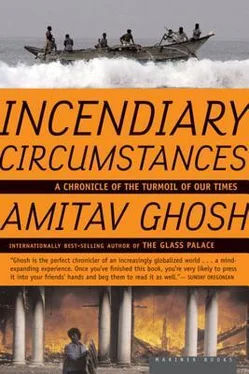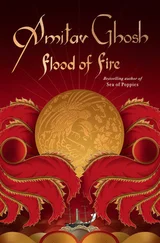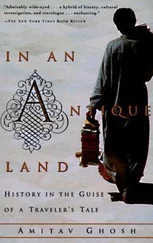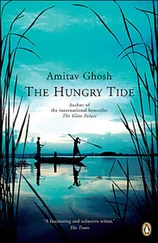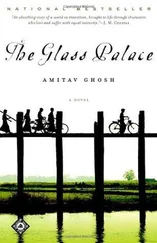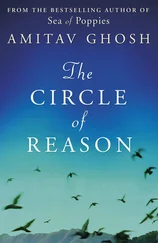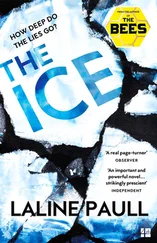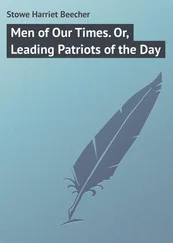The flames created by our recent past are so plentiful that only poets noticed the unsung death of a teleology. "Everything is finished, nothing remains," writes Agha Shahid Ali of a poet who returns to Kashmir in search of the keeper of a destroyed minaret.
"Nothing will remain, everything's finished,"
I see his voice again: "This is a shrine
of words. You'll find your letters to me. And mine
to you. Come soon and tear open these vanished
envelopes."…
This is an archive. I've found the remains
of his voice, that map of longings with no limit.
Buried within the poet's "shrine of words" lies a map: a chart "of longings without limit." It is not the fall of the minaret but the loss of the map that is the true catastrophe. It is this loss that evokes the words "Nothing will remain, everything's finished."
Shahid's is not the only lost map. In "The Story," Michael Ondaatje invokes another.
For his first forty days a child
is given dreams of previous lives,
journeys, winding paths,
a hundred small lessons
and then the past is erased.
Some are born screaming,
some full of introspective wandering
into the past — that bus ride in winter,
the sudden arrival within
a new city in the dark.
And those departures from family bonds
leaving what was lost and needed.
So the child's face is a lake
of fast moving clouds and emotions.
A last chance for the clear history of the self.
All our mothers and grandparents here,
our dismantled childhoods
in the buildings of the past.
Some great forty-day daydream
before we bury the maps.
The old maps are gone, and two of the finest poets of our time, Michael Ondaatje and Agha Shahid Ali, exiles from twinned Edens, have borne witness to their loss; gone are Michael's "forty-day daydream" and Shahid's "longings without limit." Writers who look back, in the wake of that loss, can only build shrines to that past. And yet the mystery of the sorrow entombed in their work is that their grief is not just for a time remembered: they grieve also for the loss of the map that made the future thinkable.
Is there then another map to replace those that have been buried in the rubble of our daydreams? Once, six years ago, I thought I had a glimpse of one: this is how it came about. I had spent a sleepless night at a guerrilla camp in the thickly forested mountains of the Burma-Thailand border. The Myanmar army was entrenched a few miles away, fighting a fierce engagement with Karenni insurgents. My hosts had handed me a makeshift pillow, of a book wrapped in a towel. The bundle came undone at some point during the night and I discovered, switching on my flashlight, that the book was called The Transformation of War. It was written by a military historian called Martin Van Creveld. I began to read and was still reading hours later. The next day, I wrote in my diary:
I am appalled by Van Creveld's vision of the future, yet over here, it makes more sense than anything I have read about this kind of conflict. Van Creveld is arguing that modern weaponry has been rendered obsolete by its very effectiveness. The destructiveness of these weapons is such as to make conventional military-based conflict impossible: hence fighting will increasingly take the form of low-intensity conflict, based upon "close intermingling with the enemy." Civilians will be in the front lines of the conflict; they will be the focus of attack and conventional distinctions between army, state, and civil society will break down. Groups such as private mercenary bands commanded by warlords and even commercial organs will become the main combatants: "future war-making entities will probably resemble the Assassins, the group which, motivated by religion and allegedly supporting itself on drugs, terrorized the Middle East for… centuries.
Till then I had taken for granted a pattern of the world that divided the globe between a large number of nation-states. Now suddenly it was as though a bucket had been upended on the map, making the colors run. The camp and the disputed territory around it was no longer on no man's land; it was a reality in its own right, one that extended in an unbroken swath through northern Burma and northeast India to western China and Kashmir, Afghanistan, Central Asia, and the Caucasus. In this immense stretch of territory, Van Creveld's vision was not just one of many possible forks in the road: it was a turn already taken. Nor could I any longer regard Myanmar and its brutally despotic regime as an aberration, a holdover from a preempted past. I was forced to ask myself whether that country might not hold some portents for the future. Burma is a country to which terrorism and insurgency came exceptionally early: within a few months of independence, in 1948, the Rangoon government was besieged by sixteen rebellions. Accounts of life in Burma in the 1950s are replete with tales of derailed trains, bombs in stations, sudden ambushes, and the like. Within a few years civil society collapsed, and there followed an absolute militarization of political life. The results are well known. That this could happen elsewhere did not seem improbable.
Not unaware of the world's discontents, I took Van Creveld's vision seriously and tried to incorporate his warnings into my everyday life. I made a point, for example, of not trying to shield my children from news of violence and terror. Yet no matter how carefully we prepare ourselves for the future, the reality is always far in excess of our imaginings.
On the morning of September 11, I was sitting at my desk in my house in Brooklyn when my wife called from her office in mid-town Manhattan to tell me about the attacks on the World Trade Center. My ten-year-old daughter, Lila, was at school a couple of miles away, and my eight-year-old son was at home: this was to have been his first day in a new school, and I was scheduled to take him there later that morning. But instead we rushed out together to fetch Lila home from her school in Brooklyn Heights.
Downtown Brooklyn was choked with people, and in the distance we saw a plume of dust rising into the clear blue sky, darkening the horizon like a thundercloud. Everyone was heading away from the river; only the two of us seemed to be walking toward the darkness in the distance. I held my son's hand and walked as fast as I could. On arriving in Brooklyn Heights, we found Lila in the basement of her school. Her eyes were bright, and she was eager to tell me what had happened. "Where were you?" she said. "I saw it all. From the window of our history class we had a clear view."
We stepped out and joined the great wave of dust-caked evacuees that was pouring over the Brooklyn Bridge. I held my children's hands and tried to think of words of reassurance, something that would reattach the moorings that had come undone that morning and restore their sense of safety. But words are not to be had for the asking, and I could think of none.
Since then I have come to recognize that there is very little I can say to broaden my children's understanding of what they saw that day. As a writer I have tried to live by the credo that nothing human should be alien to me. Yet my imagination stops short as I try to think of the human realities of what it must mean to plan a collective suicide over a span of years or to stand in a check-in line with people whose murder has already been decided on; of what it takes to speak of love on a cell phone moments before one's death or to reach for a stranger's hand as one leaps from the topmost floor of a skyscraper. These are new dimensions of human experience, and I realize that they will become a part of the generational gap that separates me from my children: their imagining of the world will be different from mine, and that very difference will create a new reality. From my own childhood I remember a day when I stared at a newspaper, mesmerized by a picture of a Buddhist monk burning at a crossroads in Saigon. At that time, this too represented a new addition to the armory of human motivation: this was the moment that inaugurated the era of political suicide in the modern world. Since then such suicides have become so commonplace as often to go unreported. They have become a part of the unseen foundations of our awareness, present but unnoticed, like the earth beneath a basement.
Читать дальше
